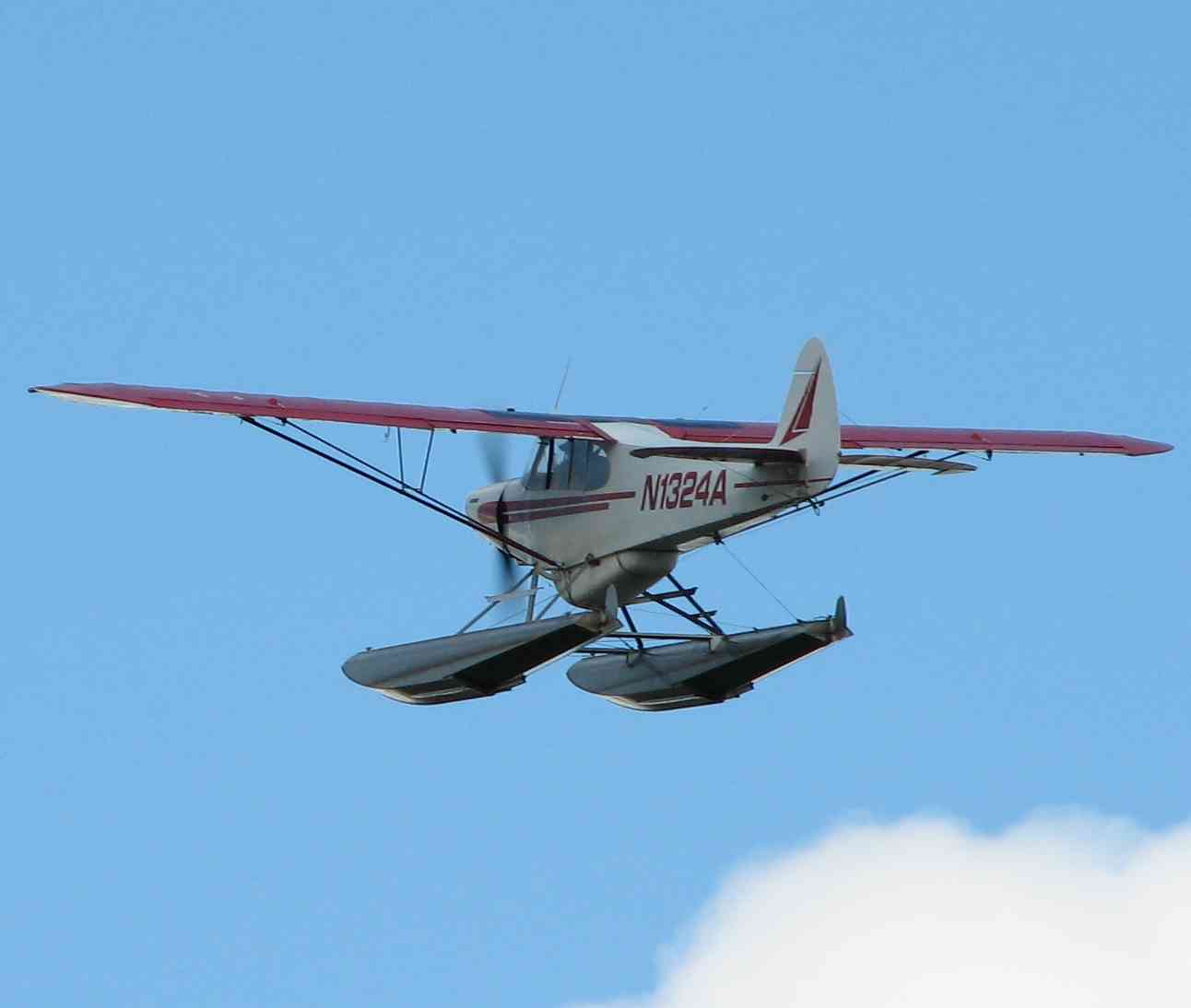
HOME PAGE
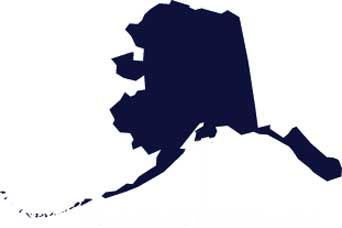
AK FAQs
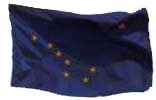
AK HISTORY
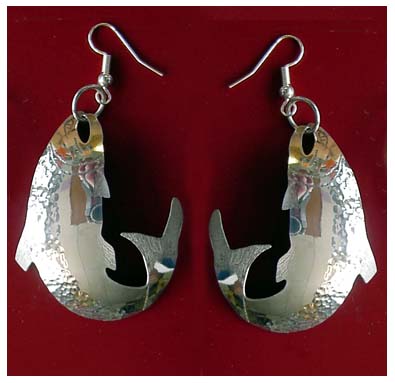
SALMON

FAVORITES
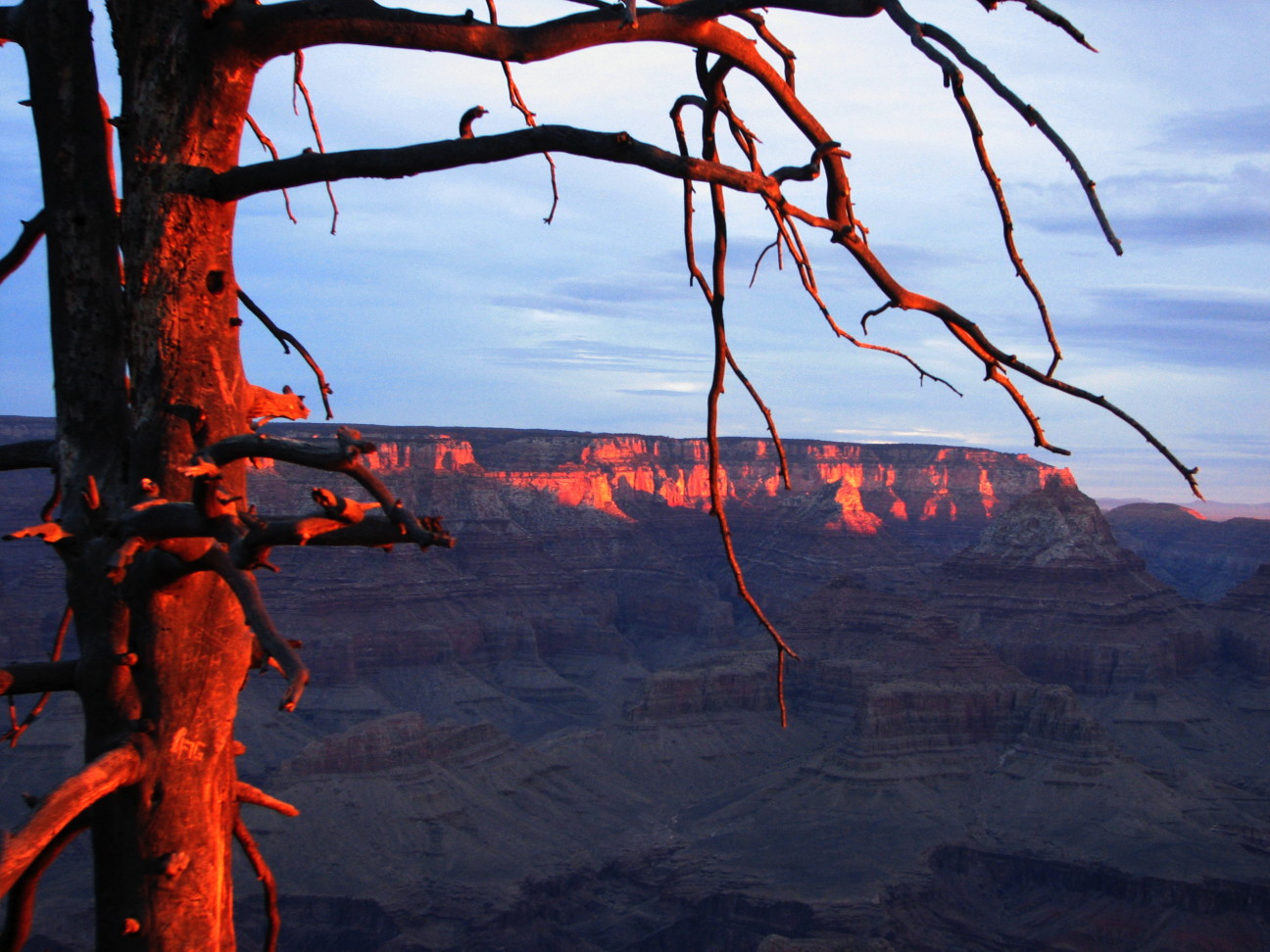
HALTRAVEL
MISCELLANEOUS ON SITE
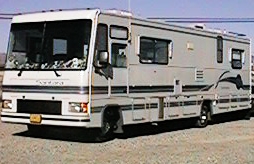
BY THE 'WAY
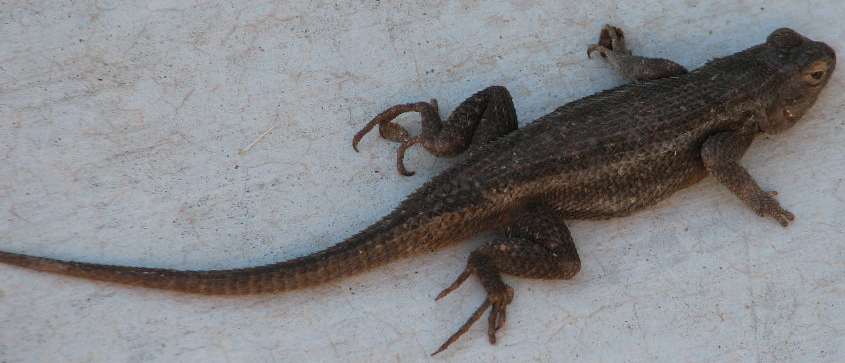
OTHER STUFF
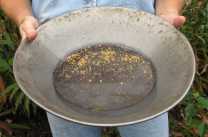
ALL EXTERNAL LINKS
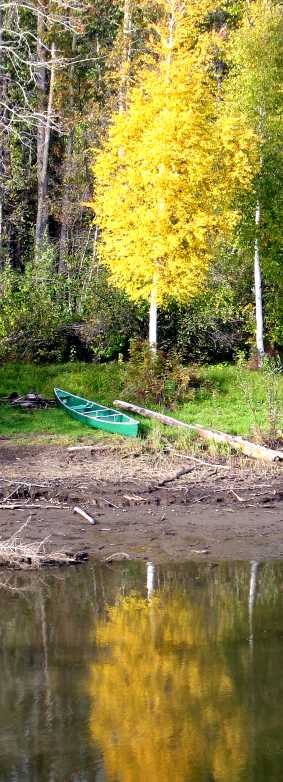
|
Alaska
Frequently Asked Questions
THE EMBEDDED LINKS OPEN NEW WINDOWS or TABS
Do Alaskans really get a big check from the oil companies?
(There are lots of variations
on this one!)
How come the price per gallon for gasoline is about
the same in Alaska as it is in the
rest of the country?
Are Eskimos and Indians the same in Alaska?
I thought Eskimoes were called The Inuit. And, what does "Athabascan" mean?
What is the Alaska State Flag?
How many kinds of salmon are there in Alaska and which is
best eating?
Are there Indian Reservations in Alaska?
Are there special considerations for Native people in
Alaska?
Do they get free college tuition, for
instance?
Interior Alaska is so colorful, sunny, and the flowers are
so beautiful.
We thought this was the
land of ice and snow!
How do you sleep with all that daylight?
How come (Interior Alaska) rivers look so dirty?
How do you pronounce all these interesting names?
What makes up the economy of Interior Alaska? How does this town
survive?
We were just going to see coastal Alaska. What makes
Fairbanks and the Interior so special, so different from the rest of the Alaska?
There are questions which make Alaskan's chuckle, but have legitimate
answers. (E.g.: Can you take the railroad to Kodiak? How about a drive to Nome? Etc.)
Do
Alaskans really get a big check from the oil companies? (There are lots of variations on this one!)
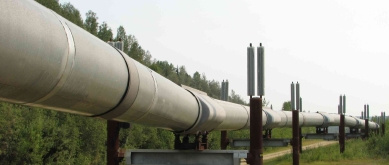 Alaskans receive what is called an Alaska
Permanent Fund Dividend (PFD) Check, issued by the State of Alaska
every year. The history and workings of The Alaska Permanent Fund is intriguing and some
consider it a model for managing government windfalls. The annual
checks are based on a formula which divides the number of registered
voters into a sum of money based on a percentage of income from the
Alaska Permanent Fund. Annual checks have ranged in size from around
$400 to just under $2000.
The APF is royalty income from the oil fields. Under the Alaska
Constitution the state owns 12.5% of the oil on the North Slope, which
is sold to the oil companies. A portion of that income goes to the
Permanent Fund. This prevents the Alaska Legislature from spending
money just "because it is there" which is the way of government bodies.
Keep in mind that in Alaska we do not have oil millionaires, because
the state owns the resources. Without the PFD, little of the oil money
would reach private hands, more likely being squandered on legislative
pork. The oil money also means Alaska does not (as of 2/6/06) have a
state income tax. This economic curiosity lead Conoco-Phillips to
proclaim in a series of TV ads in 2005 that in Alaska "we are all in
the oil industry."
Just for the record, that is not true. In my opinion the campaign was a
cheap attempt to get all Alaskans "on board" for anything Big Oil wants
to pull. For more on the history of Big Oil in Alaska, veteran
Alaska Journalist Joe La Rocca's book Alaska Agonistes: The Age of Petroleum - How Big Oil
Bought Alaska is a good place to start.
BACK TO TOP Alaskans receive what is called an Alaska
Permanent Fund Dividend (PFD) Check, issued by the State of Alaska
every year. The history and workings of The Alaska Permanent Fund is intriguing and some
consider it a model for managing government windfalls. The annual
checks are based on a formula which divides the number of registered
voters into a sum of money based on a percentage of income from the
Alaska Permanent Fund. Annual checks have ranged in size from around
$400 to just under $2000.
The APF is royalty income from the oil fields. Under the Alaska
Constitution the state owns 12.5% of the oil on the North Slope, which
is sold to the oil companies. A portion of that income goes to the
Permanent Fund. This prevents the Alaska Legislature from spending
money just "because it is there" which is the way of government bodies.
Keep in mind that in Alaska we do not have oil millionaires, because
the state owns the resources. Without the PFD, little of the oil money
would reach private hands, more likely being squandered on legislative
pork. The oil money also means Alaska does not (as of 2/6/06) have a
state income tax. This economic curiosity lead Conoco-Phillips to
proclaim in a series of TV ads in 2005 that in Alaska "we are all in
the oil industry."
Just for the record, that is not true. In my opinion the campaign was a
cheap attempt to get all Alaskans "on board" for anything Big Oil wants
to pull. For more on the history of Big Oil in Alaska, veteran
Alaska Journalist Joe La Rocca's book Alaska Agonistes: The Age of Petroleum - How Big Oil
Bought Alaska is a good place to start.
BACK TO TOP
How come the price per gallon for gasoline is about the same in Alaska
as it is in the rest of the country?
Alaska crude oil is on a world market, it is as simple as that. Think of it this way: Gold is mined in
Alaska and it still sells at prices set in London. Though the state does own the oil, it would be
irresponsible of the state to sell it below world market prices. On the other hand, the Permanent
Fund Dividend does make up for some of these unavoidable cost-of-living issues. BACK TO TOP
Are Eskimos and Indians the same in Alaska? I thought Eskimoes were
called The Inuit. And what does "Athabascan" mean?"
There are four major Native American groups in Alaska. Traditionally the Eskimos in Alaska (Yupik and
Inupiat) tended to be along the Arctic coast from the Canadian Border to around the mouth of the
Kuskokwim and Yukon Rivers in Western Alaska. They are a different group of aboriginal people from the
Athabascans (Gwitchin, Koyukon, and others). The Athabascan people are related to Native American
Groups in the Desert Southwest, notably the Apache and the Navajo. The Athabascans have a different language and
even a different physiognomy from the Eskimos. They generally live along the low lying river lands in the
Interior or inland areas of the state, though they did inhabit areas south to the gulf of Alaska. According to
Athabascan beadwork and skinsewing artist
Dixie Alexander, the word "Athabascan" means "great traveller". Dixie reminds us that Athabascans were traditionally
a nomadic people. The Aleuts
live primarily in the Aleutian Islands, the Alaska Peninsula and other coastal mainland areas in Alaska's
Westward area. The Tlingit and Haida people live in Southeast Alaska and Northern British Columbia.
It is important to note that all of these groups are different in language, appearance and cultural
traditions. Also in Southeast Alaska are the Tsimshian people. They are a smaller group and
inhabit northern British Coilumbia. The Inuit are also Eskimos but do not like that name, prefering a traditional name.
The word Eskimo is thought to have come from a European word which implied they were "primitive" or
uncivilized and is viewed by the Inuit people as insulting. There is a detailed article about
Alaska's diverse Native cultures which you can download. It is 49 pages of fascinating reading and
details many other apects of Alaska history as well! BACK TO TOP
What is the Alaska State Flag?
The flag (seen in our left "banner"; or here on the right) is the Big Dipper constellation,
with the North Star. It was designed by a young Alaska Native boy,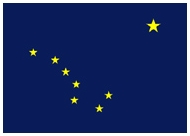 Benny Benson
an orphan living at the Jesse Lee Home in Seward during territorial days. In 1927 there was a
statewide contest for Territorial flag design. Young Benson won the contest, taking home a gold watch
and $1000 toward his further education. It is a wonderful story which is well told at that link. If
you draw a line from the "lip" of the dipper, upward, it points to the north star, a neat
navigational tool! BACK TO TOP
Benny Benson
an orphan living at the Jesse Lee Home in Seward during territorial days. In 1927 there was a
statewide contest for Territorial flag design. Young Benson won the contest, taking home a gold watch
and $1000 toward his further education. It is a wonderful story which is well told at that link. If
you draw a line from the "lip" of the dipper, upward, it points to the north star, a neat
navigational tool! BACK TO TOP
How many kinds of salmon are there in Alaska and which is best eating?
There are five species of wild Alaska salmon. "Best" is a matter of opinion. The best salmon is wild
salmon. Farm-raised fish spend an inordinate amount of time in the same water. They have poor muscle
tone, and poor color. Each species of Pacific salmon has two names. In decending order of "quality"
(and this is generally reflected by the cost at the meat counter or fish market): Red/Sockeye is the
best quality, richest in omega-3 oils; King/Chinook is next and a very very close second, in a tie I
think, with Silver/Coho. The bottom of the food chain are the Pink/Humpy, and the Dog/Chum
salmon. These last two are excellent eating when fresh; though they do not have the rich oils and flavor of
the others. The dog salmon are plentiful and commonly used as dog food (hence the name) when smoked and dried in
the villages of rural Alaska. BACK TO TOP
Are there Indian Reservations in Alaska?
Yes, but they are not the government mandated kinds of reservations which did so much damage to indigenous
Americans in the Lower 48. In fact, there are just two small reservations in the state -- Venetie about 200 miles
north of Fairbanks; and Metlakatla, in Southeast Alaska. Reservation status was requested by the residents
to give them certain sovereign rights granted under federal law. That is not to
say that the Bureau of Indian Affairs was benign in damage to Native cultures in Alaska. And Western
culture brought disease and other problems. But Alaska Natives have never been consigned by law to
designated reservations. BACK TO TOP
Are there special considerations for Native people in Alaska? Do they get
free college tuition, for instance?
First, no, Alaska Natives are not automatically granted free tuition at the University of Alaska.
As time goes by there are fewer and fewer of those kinds of paternalistic considerations granted to
Native Americans in the state.
TRADITIONAL RURAL CABIN:
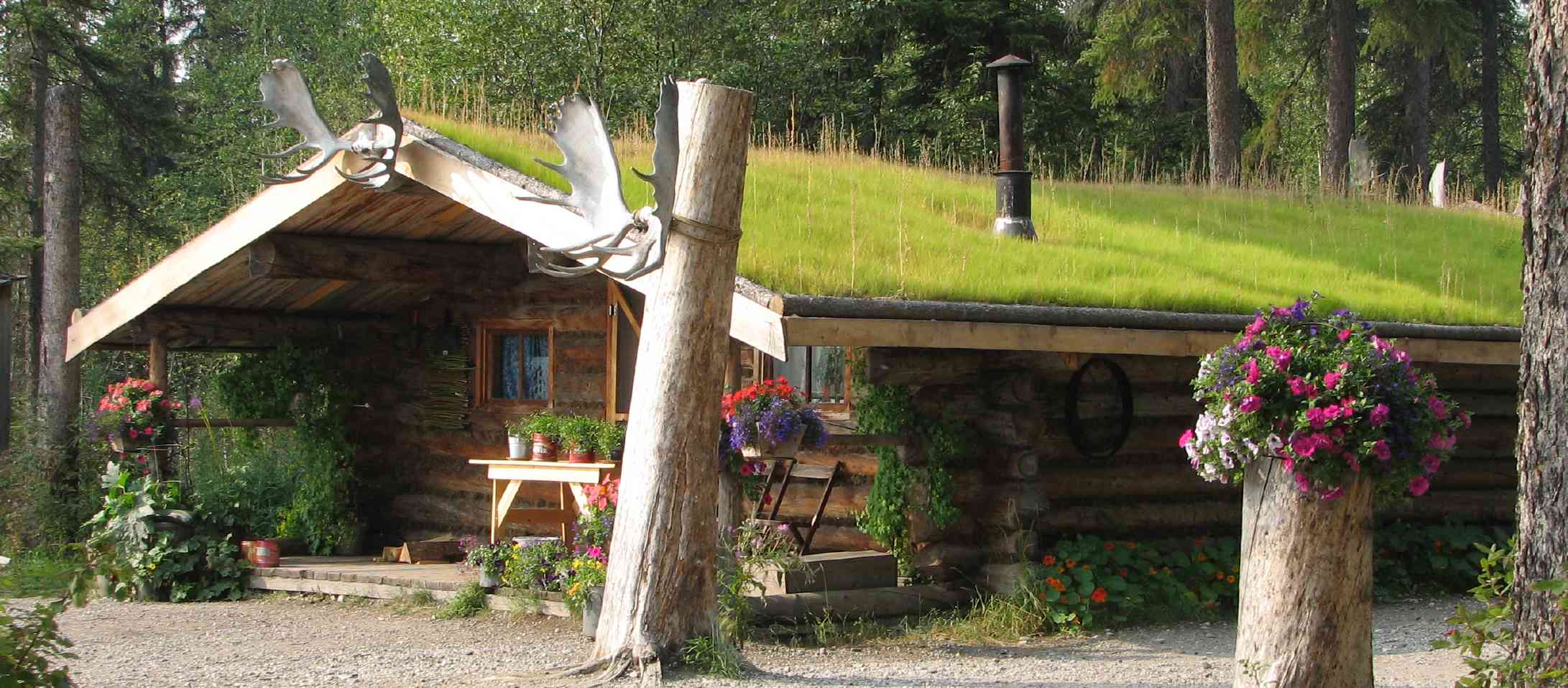
This is largely a result of the Alaska Native Land Claims Settlement Act of 1971
which granted Alaska Natives a billion dollars and 40 million acres of land. Under the Congressional Act,
known as ANCSA, Native groups in Alaska were divided into 13 regions and both non-profit human service
and private/profit-making corporations were created. The goal was to extinguish Native claims to Alaska
land and resources which were essentially taken from the aboriginal people by Western pioneers.
The Native Corporations issue stock, develop natural resources, make investments, and serve their own people.
ANCSA seemed to go a long way in maintaining good relations between cultures in Alaska. This is an enormously
complex subject and the link above is a big help. BACK TO TOP
Interior Alaska is so colorful, sunny, and the flowers are so beautiful.
We thought this was the land of ice and snow!
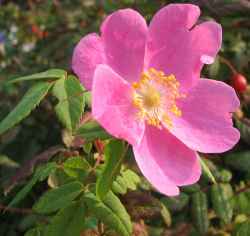 Some questions do not come as questions but exclamations demanding a response! Fairbanks is about
125 miles from the Arctic Circle. Daylight
extremes run from 21 hours and 45 minutes of daylight on June 21st, to about 2 hours and 15 minutes
of twilight on December 21st. So, more daylight, bigger flowers, richer colors. Fairbanks is
considered a subarctic desert on many maps due to the relatively small amount of precipitation.
This amounts to typically 6-8 inches of rain in summer and 6-8 feet of snow in the winter. However,
the Alaska Range, some 100 miles south of Fairbanks, is home to over 100 active glaciers which
deliver plenty of water to the Tanana Valley in the summer. The soil is rich, the summer daylight is long and
indeed vegetables and flowers do very well. BACK TO TOP
Some questions do not come as questions but exclamations demanding a response! Fairbanks is about
125 miles from the Arctic Circle. Daylight
extremes run from 21 hours and 45 minutes of daylight on June 21st, to about 2 hours and 15 minutes
of twilight on December 21st. So, more daylight, bigger flowers, richer colors. Fairbanks is
considered a subarctic desert on many maps due to the relatively small amount of precipitation.
This amounts to typically 6-8 inches of rain in summer and 6-8 feet of snow in the winter. However,
the Alaska Range, some 100 miles south of Fairbanks, is home to over 100 active glaciers which
deliver plenty of water to the Tanana Valley in the summer. The soil is rich, the summer daylight is long and
indeed vegetables and flowers do very well. BACK TO TOP
How do you sleep with all that daylight?
In some cases we actually do stay up later, get up earlier, and live summers filled with activity.
But if you need darkness to sleep, good blinds are a must. Some people put tin foil (impervious
to light) over the insides of their windows to make the bedrooms really dark. BACK TO TOP
How come (Interior Alaska) rivers look so dirty?
Ever heard of "The Big Muddy?" The glacier waters of many Alaskan rivers is laden with pulverized
rock. In this picture a clear stream joins a muddy glacier-fed river. 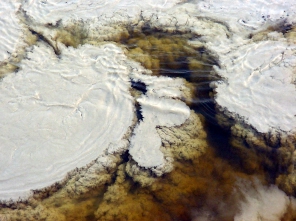 The glaciers move through
the mountains grinding rock and ice against the mountains and
a fine dust called glacial flour (as fine as the flour in your kitchen) stays in suspension
in the water, giving it that muddy appearance. The water itself is pure clean glacier water.
In coastal Alaska many rivers run clearer. This is largely due to the fact that the snow melt and
glacier water run over harder rocks and do not pick up as much debris. And coastal rivers come
directly out of the mountains without meandering across broad valleys. Meandering rivers,
sometimes called braided rivers, cover vast valleys which have more fine, loose mineral deposits from
millions of years of activity, and still making its way to the sea. Most importantly, this is a
natural process. BACK TO TOP The glaciers move through
the mountains grinding rock and ice against the mountains and
a fine dust called glacial flour (as fine as the flour in your kitchen) stays in suspension
in the water, giving it that muddy appearance. The water itself is pure clean glacier water.
In coastal Alaska many rivers run clearer. This is largely due to the fact that the snow melt and
glacier water run over harder rocks and do not pick up as much debris. And coastal rivers come
directly out of the mountains without meandering across broad valleys. Meandering rivers,
sometimes called braided rivers, cover vast valleys which have more fine, loose mineral deposits from
millions of years of activity, and still making its way to the sea. Most importantly, this is a
natural process. BACK TO TOP
How do you pronounce all these interesting names? And where did they
come from?
Like any part of the country, local names often come from the first occupants of this land, Native
Americans. 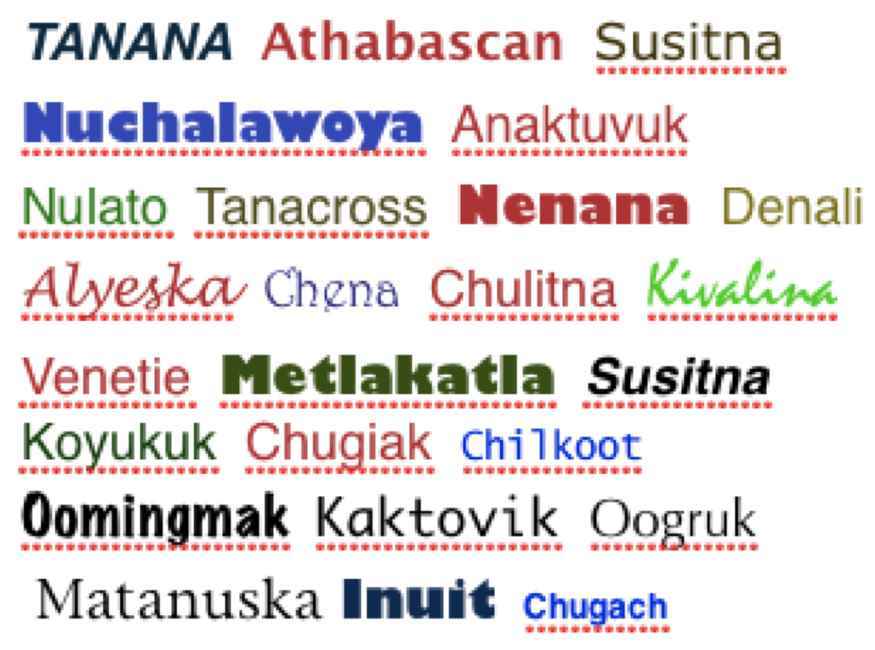 These ancient cultures had no written languages. What Westerners heard, they wrote
phonetically. Look at "an Indian word" written in English, for instance, and sound it out,
one syllable at a time. The emphasis may be slightly different, but the sounds are "All American".
The word Tanana, for instance is spelled like banana, but with a "T"; and the emphasis is on the
first syllable, not the second. At first these new sounds come off the tongue awkwardly.
Just don't try to put in sounds that aren't there. They are written in English.
Like any "foreign language", original speakers of Native languages and dialects have sounds which are
not covered by our 26-letter alphabet. As a result, most Native place names, like rivers, towns, and
locations are pronounced differently by Native speakers than by visitors. Some place names are evidently
a combination of Russian or English and Native names, a kind of slurry of sounds.
Today place names and the
like are fully "Americanized". Native dialects are still spoken; and some effort has been made to
document and even revive them before they disappear. Studies of the Native Languages reveal much about
how the people viewed things. A good place to start on the topic of Alaska place names is an
article about the Tanaina people near Cook Inlet. To gain a sense
of the English influence on Coastal Alaska, take a look at how many places were named by the
explorer George Vancouver,
The most entertaining article on this subject comes from the University of Alaska
Geophysical
Institute in Fairbanks. For fun, you can Google any of the words pictured to the left. BACK TO TOP
These ancient cultures had no written languages. What Westerners heard, they wrote
phonetically. Look at "an Indian word" written in English, for instance, and sound it out,
one syllable at a time. The emphasis may be slightly different, but the sounds are "All American".
The word Tanana, for instance is spelled like banana, but with a "T"; and the emphasis is on the
first syllable, not the second. At first these new sounds come off the tongue awkwardly.
Just don't try to put in sounds that aren't there. They are written in English.
Like any "foreign language", original speakers of Native languages and dialects have sounds which are
not covered by our 26-letter alphabet. As a result, most Native place names, like rivers, towns, and
locations are pronounced differently by Native speakers than by visitors. Some place names are evidently
a combination of Russian or English and Native names, a kind of slurry of sounds.
Today place names and the
like are fully "Americanized". Native dialects are still spoken; and some effort has been made to
document and even revive them before they disappear. Studies of the Native Languages reveal much about
how the people viewed things. A good place to start on the topic of Alaska place names is an
article about the Tanaina people near Cook Inlet. To gain a sense
of the English influence on Coastal Alaska, take a look at how many places were named by the
explorer George Vancouver,
The most entertaining article on this subject comes from the University of Alaska
Geophysical
Institute in Fairbanks. For fun, you can Google any of the words pictured to the left. BACK TO TOP
What makes up the economy of Interior Alaska? How does this town
survive?
Fairbanks is a service community for the most part. It serves an area north of the Alaska Range,
roughly the size of the state of Texas. We are home to the University of Alaska Fairbanks AND the main
campus of the University of Alaska Statewide System of Higher Education with campuses in Anchorage and
Juneau, and community college campuses throughout the state. Fairbanks International Airport is a key
transportation center for Interior and Northern Alaska as well as for over-the-pole cargo carriers
stopping here to refuel. Fuel, produced by two refineries near Fairbanks from crude oil taken from
the 800-mile Trans Alaska Pieline includes jet fuel, automotive gasoline, Diesel fuel and home heating fuels.
Alyeska Pipeline Service Company is a key employer since maintenance for the length of the pipeline is based
out of Fairbanks.
BACK TO TOP
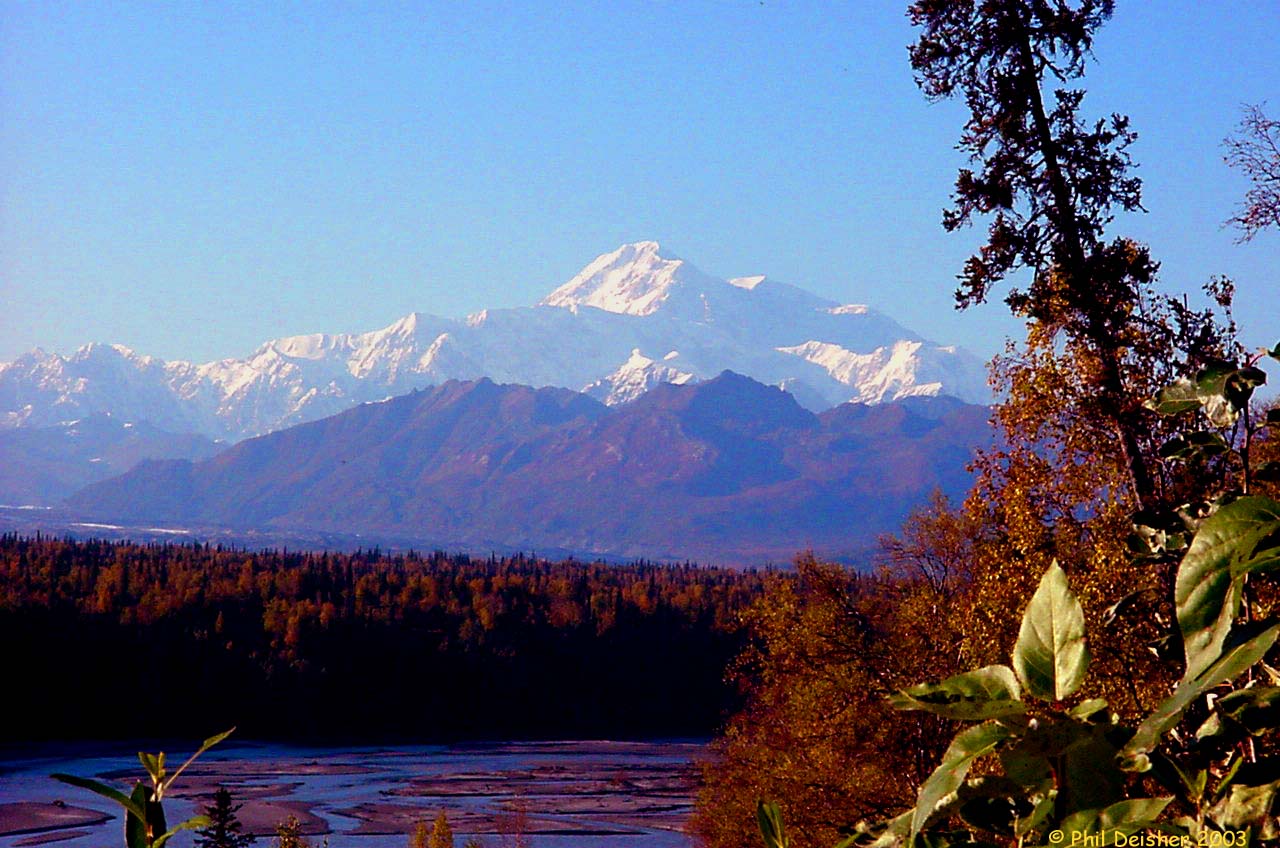 The Usibelli Coal Mine
near the community of Healy near
the entrance to McKinley National Park about 100 miles south of Fairbanks produces coal for domestic use and export.
The Alaska Railroad hauls the coal to the port city of Seward for
export.
The Usibelli Coal Mine
near the community of Healy near
the entrance to McKinley National Park about 100 miles south of Fairbanks produces coal for domestic use and export.
The Alaska Railroad hauls the coal to the port city of Seward for
export.
Coal is also used in military and civilian
power plants along the state's rail belt. The mining of gold, which put Fairbanks on the map over 100 years ago,
remains an important part of the economy. Near Fairbanks the largest open pit gold mine in the state, Ft. Knox,
operates year 'round, producing (latest Alaska DNR figures) about 400,000 ounces of gold per year. Oddly, the
most detailed information we could find on line about major gold mining operations in Alaska came from a website
run by the
Alaska Department of Natural
Resources.
UNIVERSITY OF ALASKA MUSEUM:
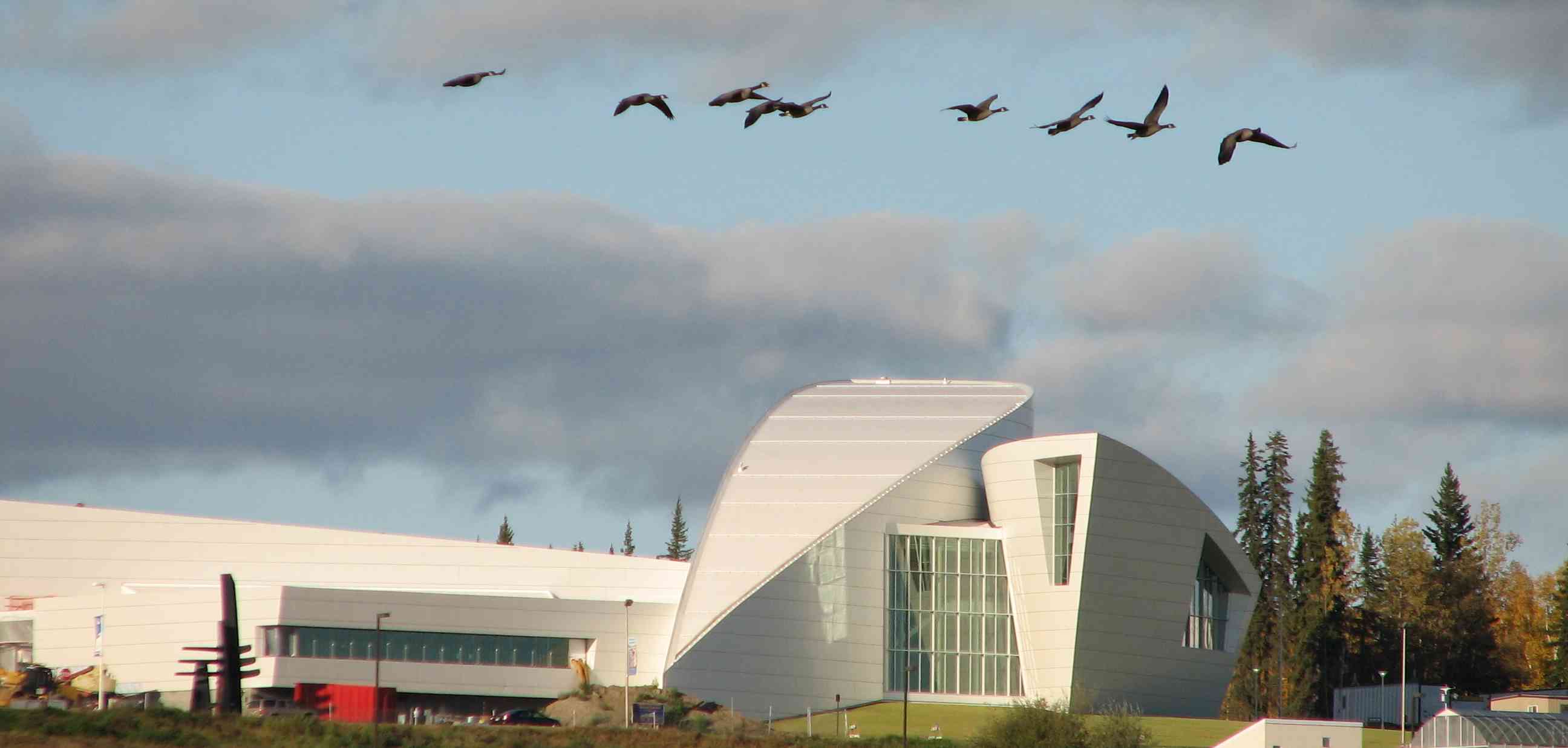
While
Fairbanks is a relatively small community of about 32,000, with an additonal 30,000 or so souls living in the
Fairbanks North Star Borough, a municipality about the size of the state of New Jersey. Beyond the Borough small
rural and remote comunities comprise another 40,000-50,000 people whose closest source of supplies is Fairbanks.
The community has excellent health care facilities including
Fairbanks Memorial Hospital which is owned by the Fairbanks Memorial Hospital Foundation and operated by
Banner Health. Medical services is a major private employer in the region.
Near Fairbanks are two military installations: Eielson AFB, and Ft. Wainwright Army Base. Fairbanks is also regional
headquarters for numerous state and federal agencies ranging from the U.S. Park Service and the U. S. Bureau of
Land Management to every department operated by the State of Alaska. Tourism is also a big part of the local economy,
employing more people during our brief season than any other industry. The State of
Alaska Division of Tourism has a free travel planner they can send
if you want to get your hands on printed material about tourism in Alaska.
BACK TO TOP
We were just going to see coastal Alaska. What makes
Fairbanks and the Interior so special, so different from the rest of the Alaska?
The best way to answer this is to go region by region and tell you about the state. Alaska is twice the size of the
state of Texas. Instead of counties, we have boroughs. The Fairbanks North Star Borough is the size of the
state of New jersey. The North Slope Borough, which encompasses most of the area north of the Brooks Range, is the
larest municipality in the world. The state is about 800 miles, top to bottom. Southeast Alaska, sometimes called
The Panhandle, is mountainous, rugged coastal rainforest. Ketchikan at the far southern end, receives 300
inches of precipitation per year. There are few roads connecting communities in Southeast. The Alaska Marine Highway
System is the link from town to town. In fact, there is not a road to our state Capitol at Junuea. Access is
by ferry or airplane. The area is dynamic, scenic, rich in culture, commercial and sport fishing abound. South Centeral
Alaska includes Anchorage, the Kenai Peninsula, Prince william Sound and the Golf of Alaska. Anchorage is Alaska's
largest community, a hub of commerce and culture; and in some folk's opinion, a suburb of Seattle. One popular book on
Alaska says Anchorage is just 30 minutes from Alaska. If you believe Alaska is the Last frontier, and Anchorage is a
cosmopolitan city, then that is true. But Anchorage, with its big box stores, Barnes & Nobles, Costcos, Big Five Sports
and so on, is an exciting city surrounded by the magnificent Chugach Mountains. Alyeska Ski Resort is a 30 minute drive
away, Portage Glacier is about 45 minutes away, and the fishing and scenic communities of the Kenai Peninsula are
two to four hours drive. Many cruise ships come into either Seward or Whittier, two small towns with interesting histories.
You could spend a month and not see all the Kenai Peninsula has to offier. Anchorage is a good jumping off place. Because
it is home to more than half of the state's population Anchorage attracts road shows, concerts, broadway plays and other
events requiring a larger population. Interior
Alaska, anchored by Fairbanks, is the real Alaska, the real frontier. This is a mining town, founded by a trader who
ended up on the banks of thre Chena River when his hired boat ran aground. As luck would have it, an Italian Immigrant,
Felix Pedro, dicovered gold in the area about the same time and as word got out, Fairbanks experienced a gold rush.
Gold, as we have seen, remains important to the economy
to this day. At first, it is not the prettiest city you will see. But it has things going for it: The people are rugged,
friendly, "happy as heck to see ya" and glad to share our part of the world with you. More than that, Fairbanks is
a small university town with an international airport, a diverse economy (as noted above), ample visitor attractions from
mining to flightseeing, hunting, and Native cultures, and plenty of daylight in the summer. It is the northern terminus of
the Alaska Railroad. Remember that Fairbanks has short summers, roughly 120 days from mid-May to mid-September. That does
not leave much time for landscaping and traditional "beautifying" and yet Fairbanks is alive with brilliant flowers and clean
streets. As a jumping off point Fairbanks is hard to beat as well. From here you can visit Ft. Yukon, the largest Athabascan
Indian community in the state. Ft. Yukon sits just north of the Arctic Circle on the banks of the Yukon River and does have
scheduled air service. The oil fields of the North Slope are accessible from Fairbanks with fly-drive tours (fly north, and
bus tour back, or the other way around).
Arctic Alaska and Northwest Alaska includes the North Slope, Kaktovic, Point Barrow (farthest north point in the US),
Kotzebue, Nome, Kotzebue, and dozens of villages and lodges.
Western Alaska includes the Aleutian Islands, the rich fishing grounds of Bristol Bay, and even such remote places as
Nunivak Island and the Pribilof Islands. These last two areas are not easy to access. They do have sceduled air service,
but exploring the region would take advanced planning by the intrepid visitor (and/or his or her travel agent!).
If you are on a scheduled tour you will get a "tourist's eye view" of Alaska, understandably. We mention this because it is
easy to come away with an impression that "All Alaskans" live in log homes, or large riverside or hillside homes, or along
salmon spawning streams, and so on. We do have our modest neighborhoods, our small businesses. We have noticed when we
travel that we have to go out of our way to find "the real" place, whatever that may be. Alaskans are real people with
real year-round jobs, mortgages, kids in school, and all the challenges you have. This is obvious to some, but we are
often asked "Do most of you leave for the winter?" Nope. Some do. It is "every Alaskan's dream" (well, most, anyway)
to escape sub-zero temperatures for at least a little while each winter.
BACK TO TOP
There are many question which make Alaskan's chuckle, but have legitimate
answers.
No railroad to Kodiak. Kodiak is an island. The Island is served by the state's Marine Highway System.
There are no roads to the coast of Western Alaska , from anywhere! The furthest west highway
on the contiguious highway system, is at Anchor Point, just north of Homer on the Kenai Peninsula.
BACK TO TOP
Need More Information? You can Google from here!

COUNTER
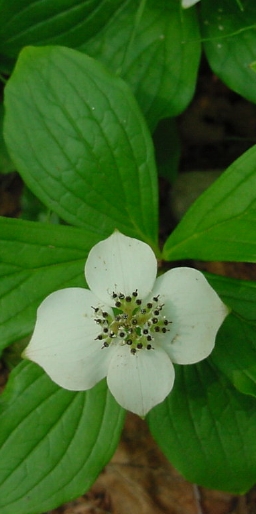 Ground dogwood is common in cool damp ground in heavily wooded areas. The "berries" are small and
red; native herbalists say they are a natural laxative.
Ground dogwood is common in cool damp ground in heavily wooded areas. The "berries" are small and
red; native herbalists say they are a natural laxative.
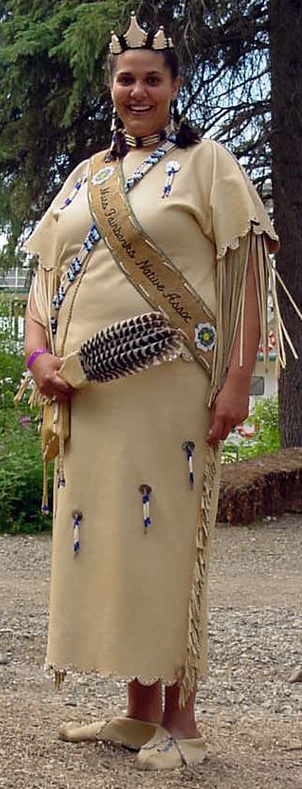
Annette was named Miss Fairbanks Native Association and competed in the
World Eskimo Indian Olympics in Fairbanks.
|
|
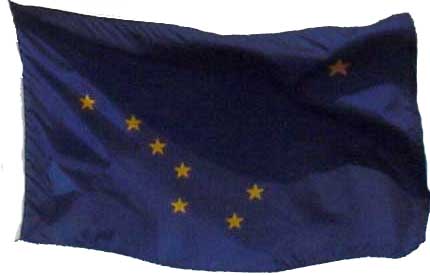









 Alaskans receive what is called an Alaska
Permanent Fund Dividend (PFD) Check, issued by the State of Alaska
every year. The history and workings of
Alaskans receive what is called an Alaska
Permanent Fund Dividend (PFD) Check, issued by the State of Alaska
every year. The history and workings of 

 Some questions do not come as questions but exclamations demanding a response! Fairbanks is about
125 miles from the Arctic Circle. Daylight
extremes run from 21 hours and 45 minutes of daylight on June 21st, to about 2 hours and 15 minutes
of twilight on December 21st. So, more daylight, bigger flowers, richer colors. Fairbanks is
considered a subarctic desert on many maps due to the relatively small amount of precipitation.
This amounts to typically 6-8 inches of rain in summer and 6-8 feet of snow in the winter. However,
the Alaska Range, some 100 miles south of Fairbanks, is home to over 100 active glaciers which
deliver plenty of water to the Tanana Valley in the summer. The soil is rich, the summer daylight is long and
indeed vegetables and flowers do very well.
Some questions do not come as questions but exclamations demanding a response! Fairbanks is about
125 miles from the Arctic Circle. Daylight
extremes run from 21 hours and 45 minutes of daylight on June 21st, to about 2 hours and 15 minutes
of twilight on December 21st. So, more daylight, bigger flowers, richer colors. Fairbanks is
considered a subarctic desert on many maps due to the relatively small amount of precipitation.
This amounts to typically 6-8 inches of rain in summer and 6-8 feet of snow in the winter. However,
the Alaska Range, some 100 miles south of Fairbanks, is home to over 100 active glaciers which
deliver plenty of water to the Tanana Valley in the summer. The soil is rich, the summer daylight is long and
indeed vegetables and flowers do very well.  The glaciers move through
the mountains grinding rock and ice against the mountains and
a fine dust called glacial flour (as fine as the flour in your kitchen) stays in suspension
in the water, giving it that muddy appearance. The water itself is pure clean glacier water.
In coastal Alaska many rivers run clearer. This is largely due to the fact that the snow melt and
glacier water run over harder rocks and do not pick up as much debris. And coastal rivers come
directly out of the mountains without meandering across broad valleys. Meandering rivers,
sometimes called braided rivers, cover vast valleys which have more fine, loose mineral deposits from
millions of years of activity, and still making its way to the sea. Most importantly, this is a
natural process.
The glaciers move through
the mountains grinding rock and ice against the mountains and
a fine dust called glacial flour (as fine as the flour in your kitchen) stays in suspension
in the water, giving it that muddy appearance. The water itself is pure clean glacier water.
In coastal Alaska many rivers run clearer. This is largely due to the fact that the snow melt and
glacier water run over harder rocks and do not pick up as much debris. And coastal rivers come
directly out of the mountains without meandering across broad valleys. Meandering rivers,
sometimes called braided rivers, cover vast valleys which have more fine, loose mineral deposits from
millions of years of activity, and still making its way to the sea. Most importantly, this is a
natural process.  These ancient cultures had no written languages. What Westerners heard, they wrote
phonetically. Look at "an Indian word" written in English, for instance, and sound it out,
one syllable at a time. The emphasis may be slightly different, but the sounds are "All American".
The word Tanana, for instance is spelled like banana, but with a "T"; and the emphasis is on the
first syllable, not the second. At first these new sounds come off the tongue awkwardly.
Just don't try to put in sounds that aren't there. They are written in English.
Like any "foreign language", original speakers of Native languages and dialects have sounds which are
not covered by our 26-letter alphabet. As a result, most Native place names, like rivers, towns, and
locations are pronounced differently by Native speakers than by visitors. Some place names are evidently
a combination of Russian or English and Native names, a kind of slurry of sounds.
Today place names and the
like are fully "Americanized". Native dialects are still spoken; and some effort has been made to
document and even revive them before they disappear. Studies of the Native Languages reveal much about
how the people viewed things. A good place to start on the topic of Alaska place names is an
article about the
These ancient cultures had no written languages. What Westerners heard, they wrote
phonetically. Look at "an Indian word" written in English, for instance, and sound it out,
one syllable at a time. The emphasis may be slightly different, but the sounds are "All American".
The word Tanana, for instance is spelled like banana, but with a "T"; and the emphasis is on the
first syllable, not the second. At first these new sounds come off the tongue awkwardly.
Just don't try to put in sounds that aren't there. They are written in English.
Like any "foreign language", original speakers of Native languages and dialects have sounds which are
not covered by our 26-letter alphabet. As a result, most Native place names, like rivers, towns, and
locations are pronounced differently by Native speakers than by visitors. Some place names are evidently
a combination of Russian or English and Native names, a kind of slurry of sounds.
Today place names and the
like are fully "Americanized". Native dialects are still spoken; and some effort has been made to
document and even revive them before they disappear. Studies of the Native Languages reveal much about
how the people viewed things. A good place to start on the topic of Alaska place names is an
article about the 



